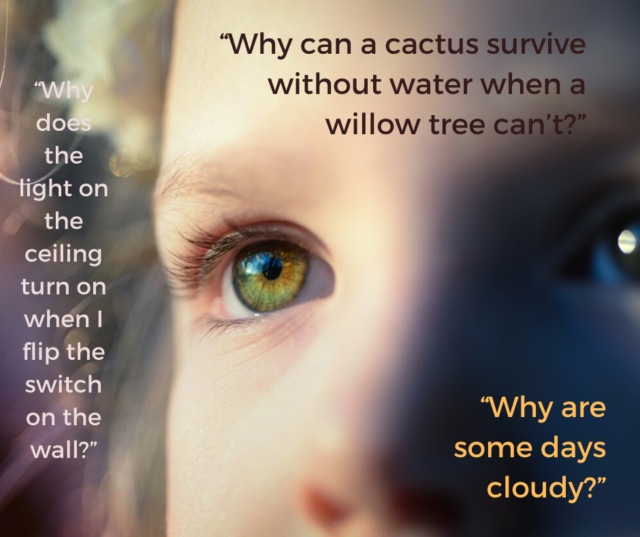 “Why are some days cloudy?”
“Why are some days cloudy?”
“Why can a cactus survive without water when a willow tree can’t?”
“Why does the light on the ceiling go on when I flip the switch on the wall?”
Our kids’ “why” questions provide near-constant reminders of their curiosity about the world. California’s new approach to science instruction, called the Next Generation Science Standards (NGSS) recognizes and encourages that natural curiosity. Research shows that doing so can ignite students’ interest in science and engineering, especially if science in school is introduced at an early age.
When teachers start with a question like “Why can a cactus survive without water?” they are using a technique called phenomenon-based instruction. The lesson starts with a question about something students can observe. Teachers then build one or many lessons to take students from that simple question into serious scientific inquiry. Our cactus question, for example, forms the basis for various student activities in a first grade classroom, including:
- Examining cactus needles and discussing how they might provide shade and protection for the plant.
- Thinking about and listing the different parts of plants more generally (roots, stems, leaves, flowers, fruits) and using examples to understand how they help plants survive and grow.
- Comparing a willow tree and a teddy bear cholla cactus to discover how their different parts help them survive and grow in very different environments.
- Creating a picture that illustrates how a cactus’ spines and water-storing stems help it survive in the desert.
Coincidentally (or maybe not) this is an example from a free first-grade lesson available through the California Education and the Environment Initiative. You’ll find it here: https://www.californiaeei.org/curriculum/unit?unitid=4. The initiative provides a wealth of ideas for how teachers can start with questions about the environment and use them to help students explore questions of science, engineering and much more.
As a parent, you can use the same kind of question-based approach to explore science and environmental topics with your kids, even if none of you think of yourselves as scientists. The lessons on the EEI website, which cover a wealth of topics and grade levels, can give you some ideas. There is a full list at https://www.californiaeei.org/curriculum/.
As a parent leader, you can ask district officials or your school principal what is happening around science instruction and environmental education, and whether teachers are working with the new standards. And how can that best be shared with parents? Could teachers present a sample lesson to parents or make science instruction a special feature of the school’s next open house? If your school has a science fair, should the new standards be reflected in student projects?
Want to learn more about Next Gen Science as a first step? Try this page on CAPTA.org: https://capta.org/focus-areas/education/next-gen-science/
Click here to return to the blog homepage.